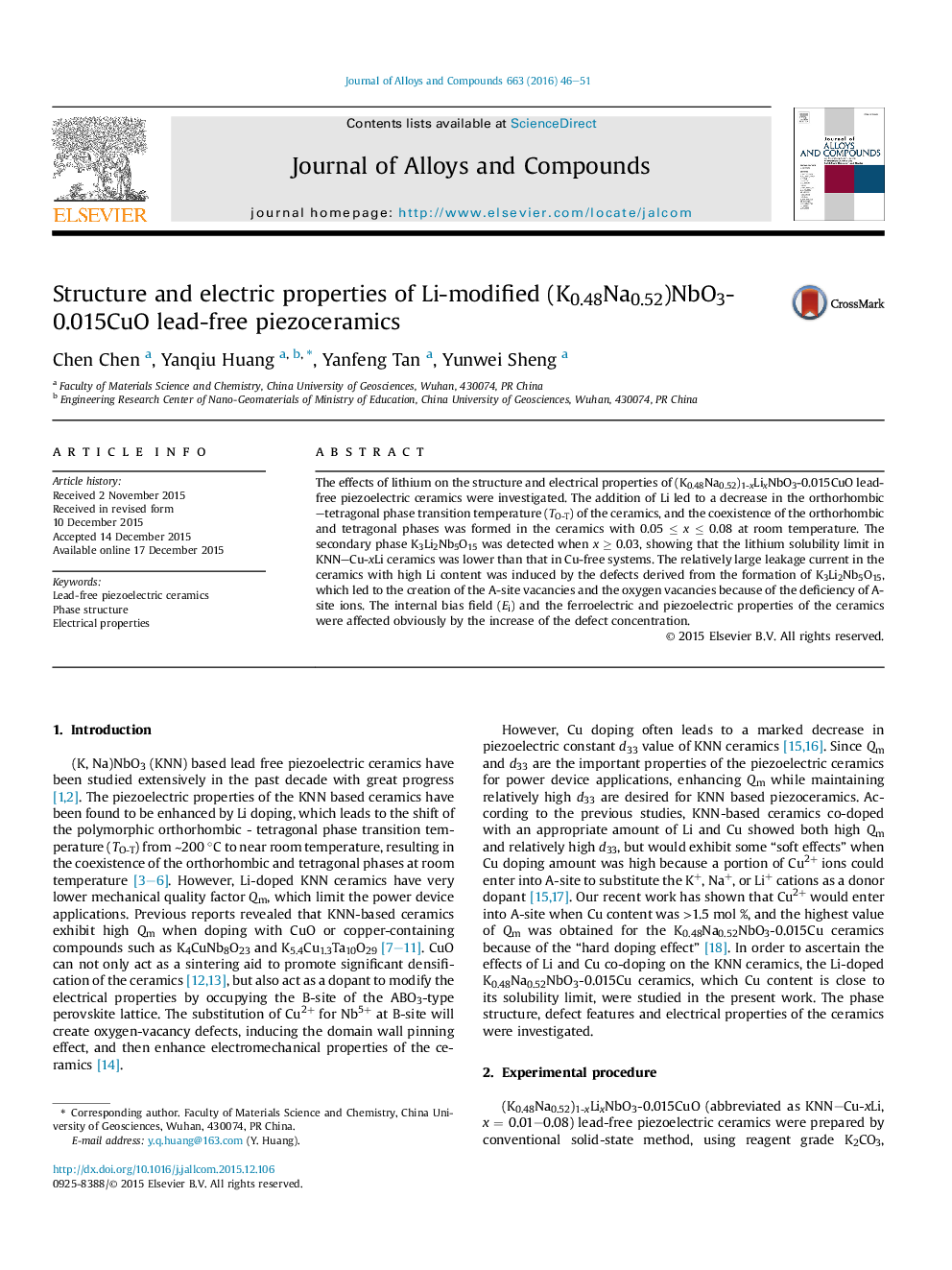| Article ID | Journal | Published Year | Pages | File Type |
|---|---|---|---|---|
| 1606899 | Journal of Alloys and Compounds | 2016 | 6 Pages |
•(K0.48Na0.52)1-xLixNbO3-0.015CuO lead-free piezoelectric ceramics were investigated.•The lithium solubility limit in KNN–Cu-xLi ceramics was found to be lower than that in Cu-free systems.•The large leakage current was found to be related to the increase of oxygen-vacancy defect concentration.•The properties of the ceramics were affected obviously by the defect concentration.
The effects of lithium on the structure and electrical properties of (K0.48Na0.52)1-xLixNbO3-0.015CuO lead-free piezoelectric ceramics were investigated. The addition of Li led to a decrease in the orthorhombic–tetragonal phase transition temperature (TO-T) of the ceramics, and the coexistence of the orthorhombic and tetragonal phases was formed in the ceramics with 0.05 ≤ x ≤ 0.08 at room temperature. The secondary phase K3Li2Nb5O15 was detected when x ≥ 0.03, showing that the lithium solubility limit in KNN–Cu-xLi ceramics was lower than that in Cu-free systems. The relatively large leakage current in the ceramics with high Li content was induced by the defects derived from the formation of K3Li2Nb5O15, which led to the creation of the A-site vacancies and the oxygen vacancies because of the deficiency of A-site ions. The internal bias field (Ei) and the ferroelectric and piezoelectric properties of the ceramics were affected obviously by the increase of the defect concentration.
